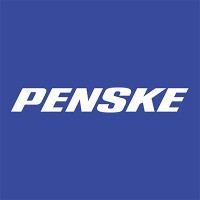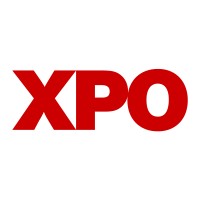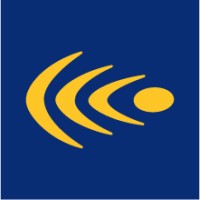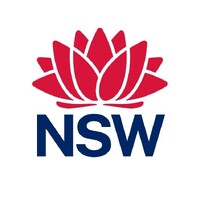
Penske Truck Leasing Company Cyber Security Posture
pensketruckleasing.comPenske Truck Leasing is a Penske Transportation Solutions company headquartered in Reading, Pennsylvania. A leading provider of innovative transportation solutions, Penske operates and maintains more than 437,000 vehicles and serves its customers from nearly 1,000 maintenance facilities and more than 2,500 truck rental locations across North America. Solutions from Penske include full-service truck leasing, fleet maintenance, truck rentals, used trucks, and a comprehensive array of technologies to keep the world moving forward. Visit pensketruckleasing.com for more information. Penske Truck Leasing Co., L.P. is a partnership of Penske Corporation, Penske Automotive Group and Mitsui & Co., Ltd.
PTL Company Details
penske-truck-leasing
11015 employees
76442.0
484
Truck Transportation
pensketruckleasing.com
Scan still pending
PEN_1430262
In-progress
Between 900 and 1000
This score is AI-generated and less favored by cyber insurers, who prefer the TPRM score.
 PTL Global Score
PTL Global Score.png)

Penske Truck Leasing Company Scoring based on AI Models
| Model Name | Date | Description | Current Score Difference | Score |
|---|---|---|---|---|
| AVERAGE-Industry | 03-12-2025 | This score represents the average cybersecurity rating of companies already scanned within the same industry. It provides a benchmark to compare an individual company's security posture against its industry peers. | N/A | Between 900 and 1000 |
Penske Truck Leasing Company Cyber Security News & History
| Entity | Type | Severity | Impact | Seen | Url ID | Details | View |
|---|
Penske Truck Leasing Company Subsidiaries

Penske Truck Leasing is a Penske Transportation Solutions company headquartered in Reading, Pennsylvania. A leading provider of innovative transportation solutions, Penske operates and maintains more than 437,000 vehicles and serves its customers from nearly 1,000 maintenance facilities and more than 2,500 truck rental locations across North America. Solutions from Penske include full-service truck leasing, fleet maintenance, truck rentals, used trucks, and a comprehensive array of technologies to keep the world moving forward. Visit pensketruckleasing.com for more information. Penske Truck Leasing Co., L.P. is a partnership of Penske Corporation, Penske Automotive Group and Mitsui & Co., Ltd.
Access Data Using Our API

Get company history
.png)
PTL Cyber Security News
Mack Trucks, PrePass and Penske Truck Leasing head up this week's CCJ Tech Shorts
It tracks live truck and shipment data to identify driver availability, location and where the driver is next headed. It also aggregates load ...
Team Penske’s Sustainable Data Hub continues transformative journey
Team Penske is on the fast track to changing how people think about digital transformation in professional racing. Over its 59-year history, Team Penske has ...
Combating Cargo Theft With An Integrated Security Strategy
The most effective cargo thieves—and therefore the costliest to the industry—are those that exploit the intersection between cybersecurity, ...
Penske Truck Leasing Opened its Southeast Facility in Tampa, Florida
In 2020, the company opened a software development and cybersecurity support center office in Tampa. This technology center, located at 5401 W ...
Penske Truck Leasing Expands in Tampa
Penske Truck Leasing announced it opened a new facility in Tampa, Fla., to upgrade the service it provides to existing customers in the area.
Penske opens new 11-acre truck rental, maintenance facility in Tampa
All the people moving into and around Tampa Bay are going to need trucks to haul their stuff. Penske Truck Leasing wants to be ready for ...
Top trucking trends to monitor in 2024
Average marginal trucking costs reached a record $2.25 a mile in 2022, according to the American Transportation Research Institute. The costs of ...
State of logistics outsourcing study shows major changes ahead for supply chain
Korn Ferry is the preeminent authority on leadership and talent. For nearly half a century, clients have trusted us to recruit world-class ...

PTL Similar Companies

XPO
XPO provides world-class transportation solutions to the most successful companies in the world. We have a high-energy team around the globe focused on being the best in the industry. Given the scope of our business, there are opportunities to do satisfying work in many different fields, and at all

The Kowloon Motor Bus Company (1933) Limited
Established in 1933, The Kowloon Motor Bus Company (1933) Limited ("KMB") is the largest franchised bus operator in Hong Kong, serving more than 2.8 million passenger-trips each day. A workforce of more than 12,300 employees, including some 10,000 bus captains, ensures that customers enjoy high-qual

CLW GROUP TRUCK
CLW GROUP TRUCK produce trucks specially for you,we are the biggest special trucks manufacturer in China,you can find all kinds of the special trucks produced in our factory ,and you can also send us the drawings and the requirement details to produced specially for you . In our factory you can f

Netlog Logistics Group
– Based in Istanbul, Turkey, Netlog Logistics Group (“NLG”) is an internationally acclaimed logistics services provider (“LSP”) – NLG offers warehousing, international road, air and sea freight transportation, as well as temperature-controlled logistics and liquid bulk food transportatio

Veolia Transport
* Incorporate all transportation options seamlessly into the region * Offer a coordinated, smooth, interlocking transportation system * Provide each rider with high-quality service * Make our employees central to our business plan * Make tangible, measurable improvements to the e

Transport for NSW
We’re a New South Wales government organisation leading the group of transport agencies and divisions that keep NSW moving. With over 25,000 people working right across NSW, we drive the continual development of safe, integrated and efficient transport systems such as road, rail and maritime network

Frequently Asked Questions
Explore insights on cybersecurity incidents, risk posture, and Rankiteo's assessments.
PTL CyberSecurity History Information
How many cyber incidents has PTL faced?
Total Incidents: According to Rankiteo, PTL has faced 0 incidents in the past.
What types of cybersecurity incidents have occurred at PTL?
Incident Types: The types of cybersecurity incidents that have occurred include .
Incident Details
What are the most common types of attacks the company has faced?
Additional Questions
What Do We Measure?
















Every week, Rankiteo analyzes billions of signals to give organizations a sharper, faster view of emerging risks. With deeper, more actionable intelligence at their fingertips, security teams can outpace threat actors, respond instantly to Zero-Day attacks, and dramatically shrink their risk exposure window.
These are some of the factors we use to calculate the overall score:
Identify exposed access points, detect misconfigured SSL certificates, and uncover vulnerabilities across the network infrastructure.
Gain visibility into the software components used within an organization to detect vulnerabilities, manage risk, and ensure supply chain security.
Monitor and manage all IT assets and their configurations to ensure accurate, real-time visibility across the company's technology environment.
Leverage real-time insights on active threats, malware campaigns, and emerging vulnerabilities to proactively defend against evolving cyberattacks.




